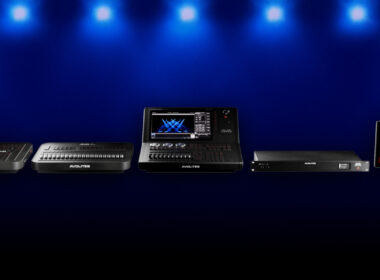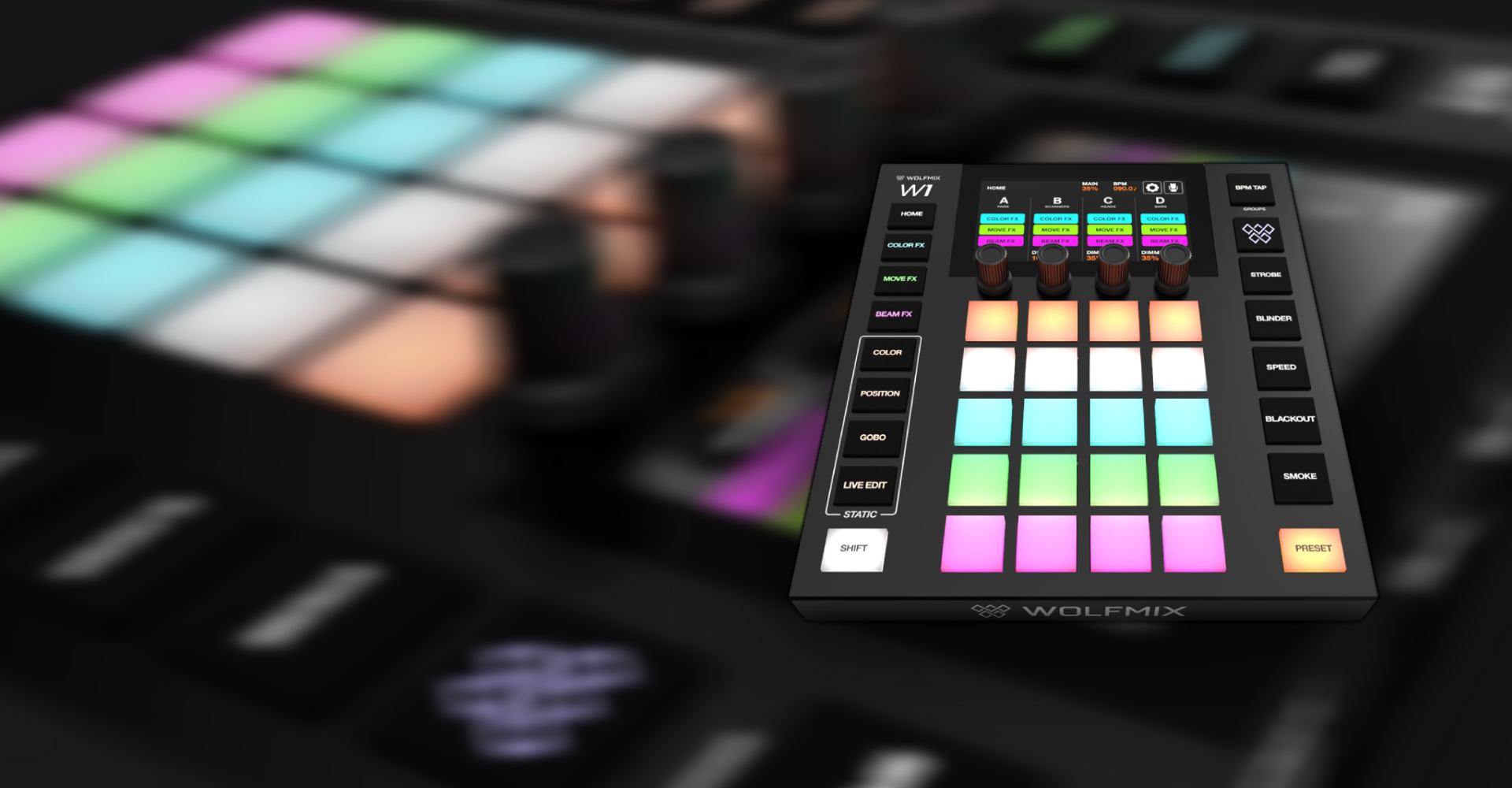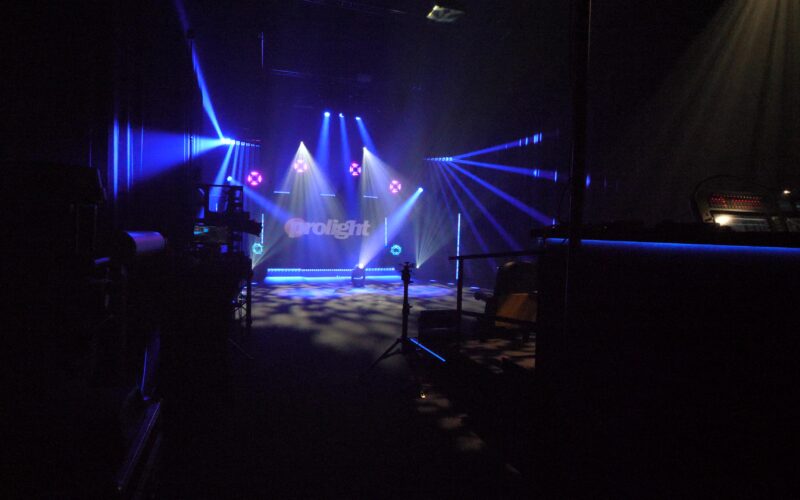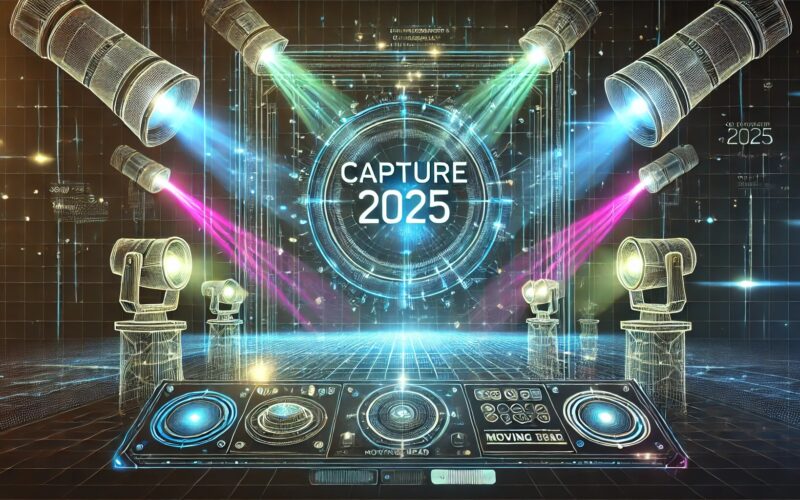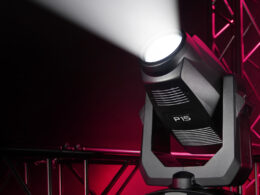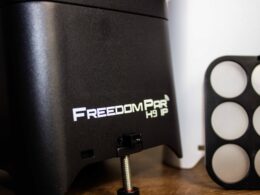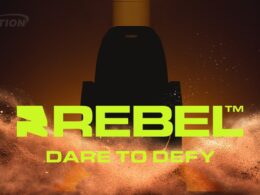I admit that at first Wolfmix aroused mixed feelings in me. Mainly because of the appearance, which deceptively reminds me of such a smaller Pusha (MIDI controller for Ableton), something that has little to do with light. The controller has a similar layout, i.e. a display on top in the middle, encoders and pads below.
Wolfmix W1 is such, a new look at simple lighting controllers. In fact, the device is equipped with features from much more expensive solutions, while maintaining intuitive operation and what not to say, affordable price. It took a maximum of 2 minutes to create a show, patch and light anything on first startup.
First launch
After launching Wolfmix, we see the main screen, where we can dimmer individual groups of devices with encoders, or turn on effects on groups. The first impression is that practically everyone will manage to operate the device. In order not to be lip service, I should add that I gave my dad a click and he managed very quickly.
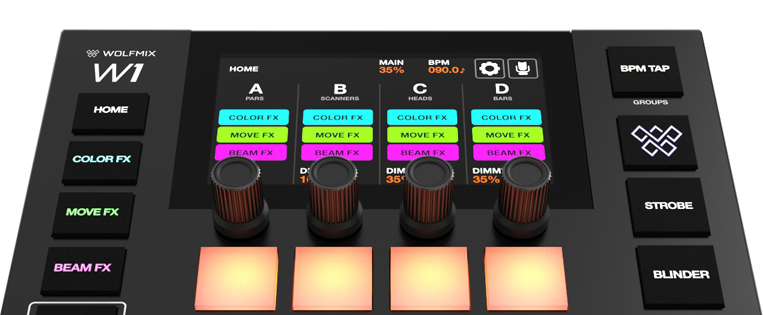
Here, by clicking on the sprocket, we have access to a menu where we can manage the show, rename the 8 groups available in the device, enter the settings, use the DMX tester, and lock the controller.
Patching devices
We will enter device patching using the device icon in the upper right corner. After entering, we will see a list of patched devices or none at the new show.

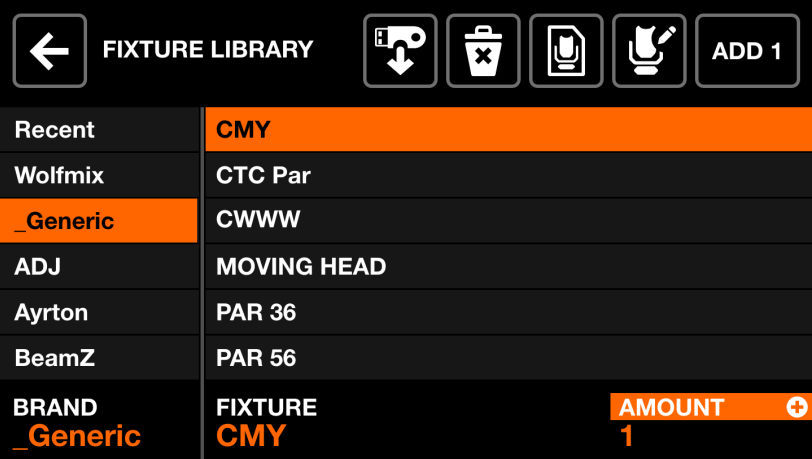
And here we come to the first flaw, admittedly a software flaw, but a flaw nonetheless. It is about the lack of devices in the library. For example, in the Clay Paky manufacturer's tab, by default we can find only two devices.
The way to do this is to download the appropriate library from the console manufacturer because not all of them are preloaded on the device by default. So we have to do a kind of "outsourcing" on the basis of using additional Wolfmix tools, such as WTOOLS or the official profile builder. There, in turn, we will already find a sizable amount of control hardware.

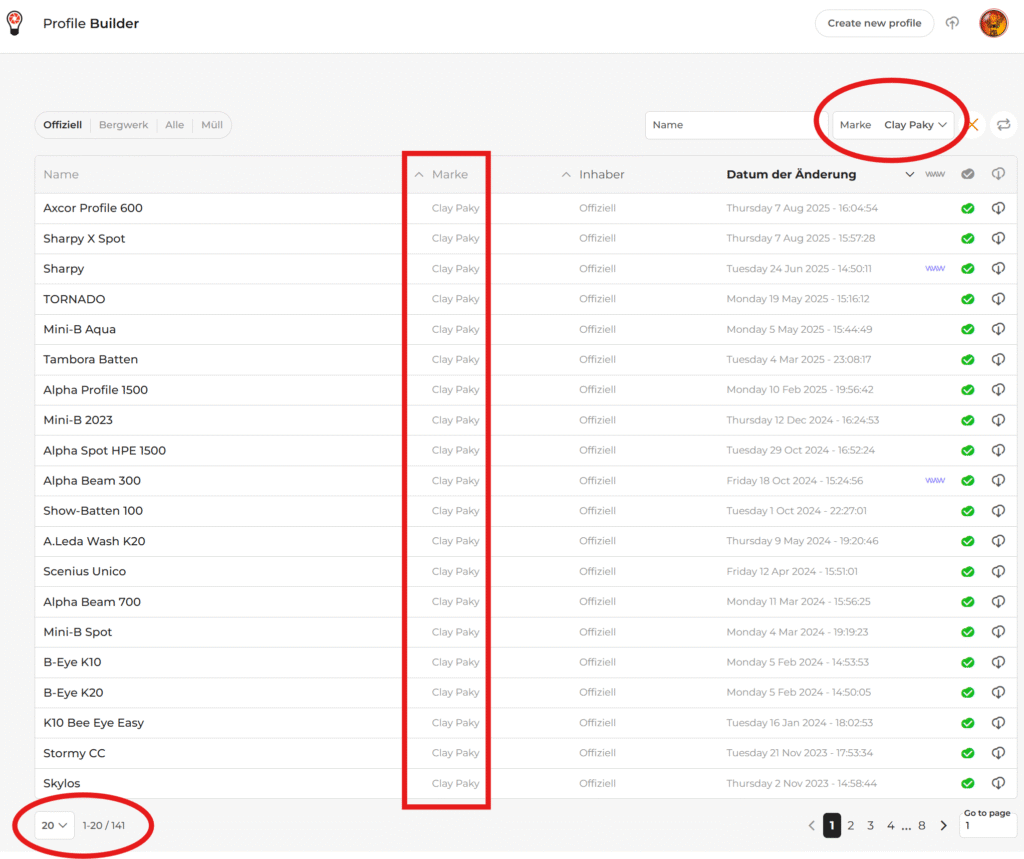
The second option is to write your own. This is quite simple and intuitive and we can do it in the driver itself without using a computer.
Presty for attributes
Like any lighting soft, the device is based on presets. To facilitate the work of less advanced users, they are generated automatically.
Colors: Here we have everything we need for static colors on devices. Basic presets are created automatically after spatching, and of course there is an option to customize the values.
Color picker gives us the ability to choose on which mode we want to mix - RGBW or RGBWAU. Unfortunately, it does not use a color dial, and for devices based on static colors, you have to adjust them yourself.
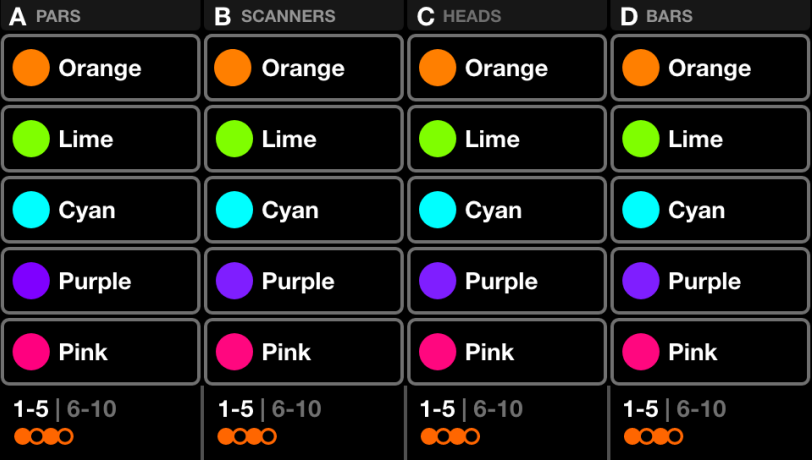

Under the encoders, we can set whether we want the colors to be set to all devices in the group, as even-odd meaning even and not even, or multiple gradients.
Positions: By clicking on the Position button you see a screen with all positions. Here you can change the transition times of the positions and also edit them.
A cool option is the Position Picker - which is nothing more than the ability to control the position by moving the punch along the axes.
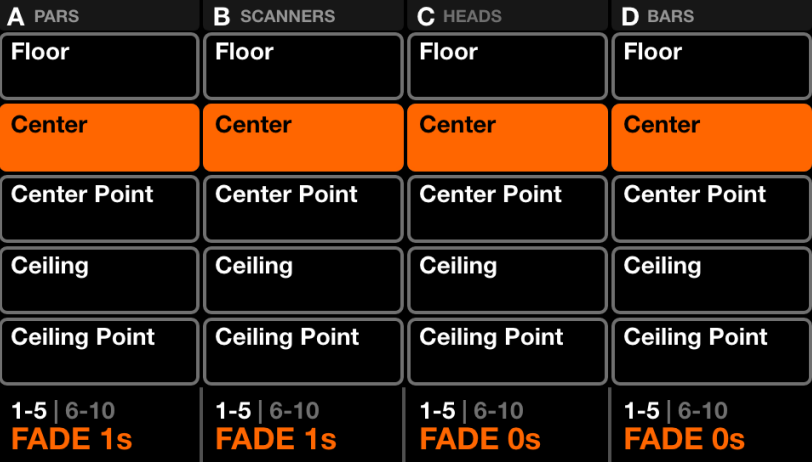
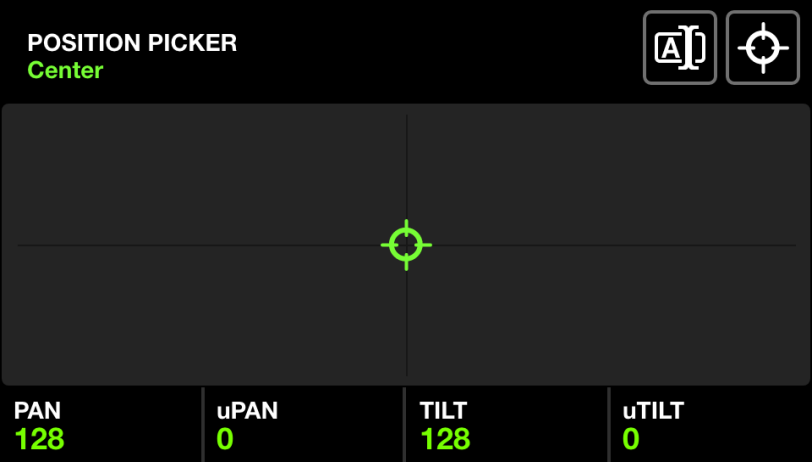
Gobo: In the Gobo tab you won't find much, there are a few predefined gobos here. Of course, it is possible to change or rotate them.
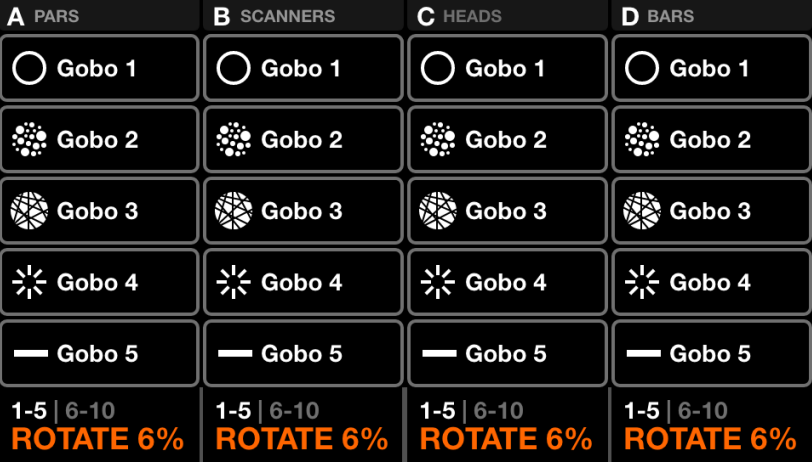
Reaching the end of this paragraph, I must mention a few limitations. The first will be the limitation of the number of memories to 10. We can operate on a maximum of 10 memories divided on 2ch pages - also we have to make conscious decisions about what we need if we control more advanced devices. Apparently, this is supposed to change with a soft update - called "Double Trouble" - which means, as the name suggests, everything will be doubled.
The device also does not have "global" memories. So for each group of devices we have a separate column of selection - as in the attachments above.
"Live Edit" palettes and presets for scenes
What are Live Edits? They are sort of like executors from larger consoles. We can store any DMX values under them, and then trigger them at any time. We have a classic trigger (toggle - on/off) or "on hold" (flash).
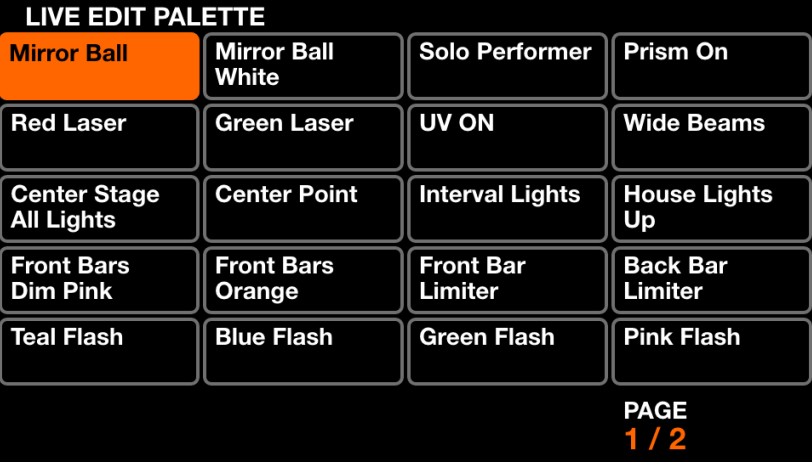
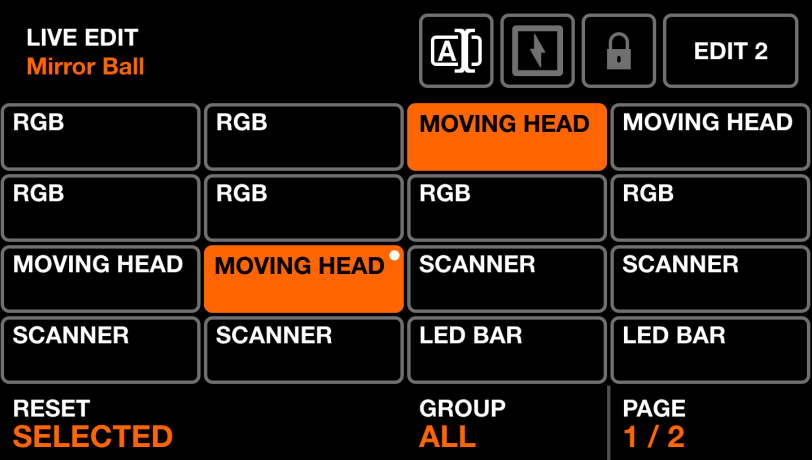
Live Edit's can also be customized by changing the color of the button backlight on the physical panel.
The "Preset" tab contains all the selections , so when saved and run, everything changes to what it was when saved. Not to be confused here with attribute presets - although they could change the name simply to CUE. They can only be called up in the "Go" way - no flash or triggers.
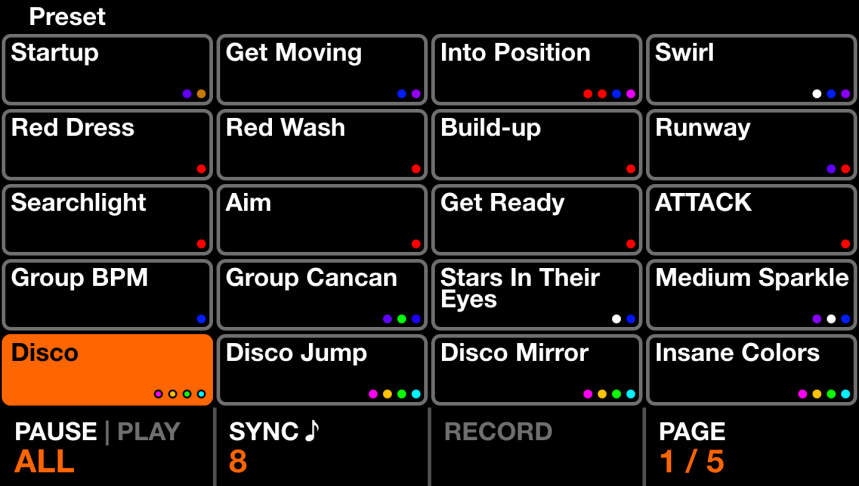
What is the difference between "Live Edit" (LE*) and "Presets " - The first important point is the saving capabilities. For LE*, we can save any moved DMX value, while presets can only be built by creating a scene based on attribute memory. Live Edit does not support effects - that is, we can only save scenes with effects in the preset window.
It is worth mentioning that in the upcoming firmware update 2.0 there will be a feature where presets will be created automatically for the devices we have patched. How it will work, I do not know, but it promises to be quite interesting.
Meat or effect generators
In Wolfmix W1 you will find 3 effect generators, they are, in turn:
- Color FX - effects on color
- Move FX - movement effects
- Beam FX - dimmer, zoom, iris effects, etc.
For the moment, each effect works the same on each device. We can only turn them on and off on individual groups, the rest of the parameters are the same.
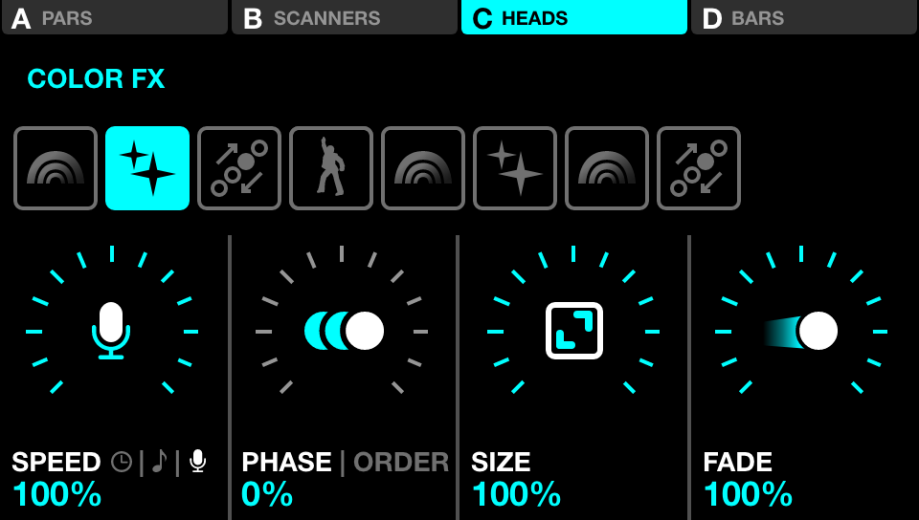
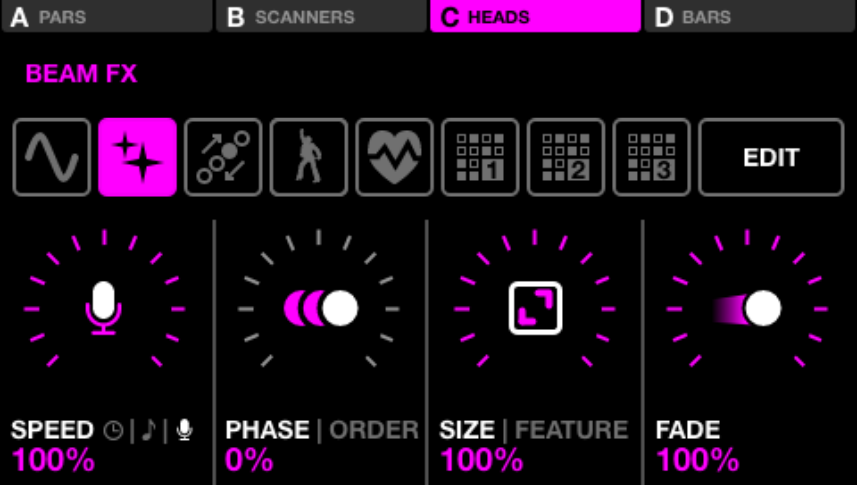

Wolfmix's generator is very similar to those of the big consoles. You'll find basic parameters like Velocity along with sync to tempo, phase (delay between devices), size/width (Size), hard or soft transition (Fade) and changing the effect's waveform.
I will point out here that there is no bank of predifferentiated effects. Under each group we can create one effect for the previously mentioned values. If we want to save our dream template then we have to save it in the preset window - and use the generator independently.
Accent buttons (strobe, blinder, etc.)
By default in Wolfmix we have 6 accent buttons physically available on the right side from the screen. They are:
- Wolf - it's hard to call it somehow, the devices gently flicker white
- Strobe - here you do not need to explain anything, strobe with adjustable speed
- Blinder - turning everything white with adjusted exit time
- Speed - this is an interesting thing, thanks to it you can temporarily accelerate, slow down or even stop all movements and effects
- Blackout - the usual blackout
- Smoke - control of smoke/fog generator
- BPM Tap - not exactly an accent, but it's worth mentioning that there's a button at hand to pick up the tempo of the song
Unfortunately, the buttons are predefined and the only editing options are strobe speed, change speed (Speed), fade out time (Fade in) and trigger (toggle, flash, timer, etc.).
How do we drive the devices from Wolfmix?
Wolfmix comes with 2 DMX lines by default, you will probably ask why it has as many as 4 outputs? Additional 2 universes can be purchased for $99 per line. Personally, I'm not a fan of software blocking functions that are physically possible, but I understand that at a low price you have to make money on something.
In addition, I will point out that the device does not have the ability to control Art-net or sACN protocols at the moment. Here we do not even have network sockets.
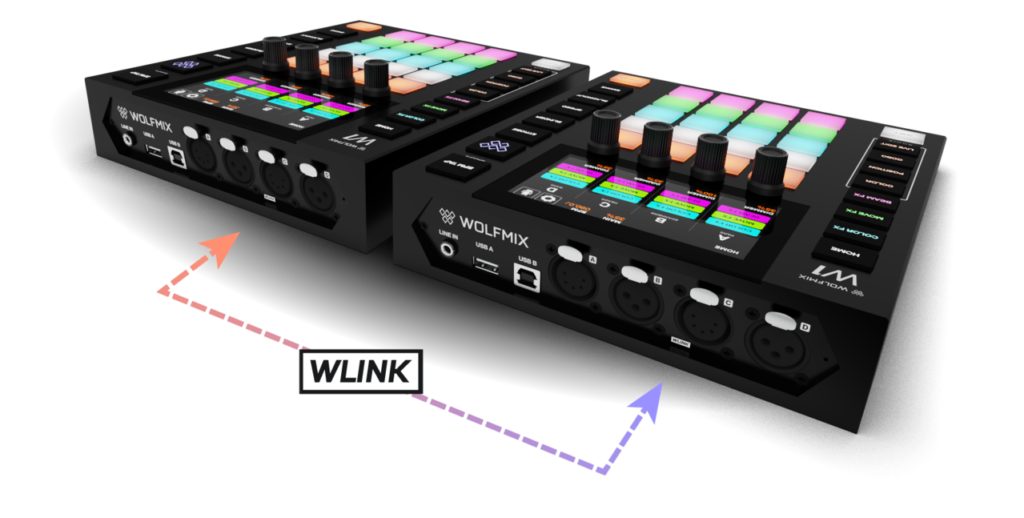
In the image above you can see that the controllers can be paired with each other. For this we need WLINK cable available for purchase on the manufacturer's website. The disadvantage of this solution is that we then lose 2 DMX outputs. - So in the end we still work on two.
And where are the zippers?
As you can see, the controller does not have any faders, but we can plug in a regular DMX controller or MIDI controller.
3D visualizer
Along with the controller we get a simple 3D visualizer EasyViewConnect. Of course it doesn't have an uphill climb to the likes of Depence or Capture but that's not the point here, it's supposed to be easy to use and quick to use, and it does that very well. The only downside is that we have to pay an extra $99 for this extension.
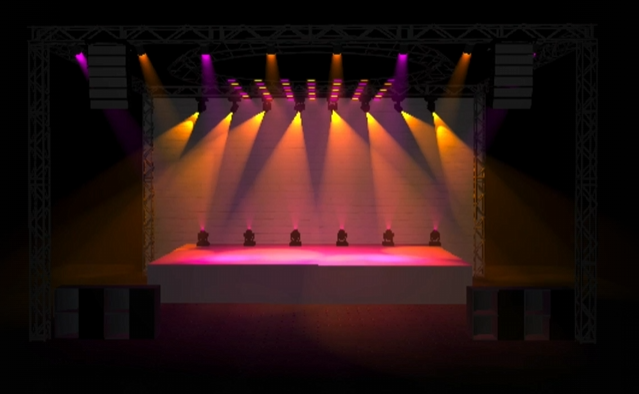
Visualizer looks pretty good, however, it's not a typical CADo'wy program so it's not the best to draw in it, but for simple projects it can handle it
Summary
The Wolfmix W1 is certainly an interesting controller, aimed mainly at less advanced users who want a bit of a foretaste of larger control systems as well as those more experienced for simple pieces like conferences.
The device is very light and small, which makes it enough to come with a backpack for art, and literally so. In terms of functionality, it is definitely geared to shine from the paw. You won't experience features such as timecode, macro, or even cue queue.
Deciding to choose this controller you have several certainties - you will quickly and easily control a basic lighting set, and on top of that you will be able to feel like a DJ....
Manufacturer: WolfmixDistributor: FCStage Limited



